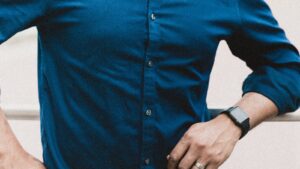Deciding what to wear for an interview often leaves you standing before your wardrobe, wondering if adding a splash of color could be a bold move or a misstep. You’re not alone in asking “can you wear color to an interview?” It’s a question that taps into the delicate balance between expressing your individuality and adhering to professional norms.
Choosing the right colors can communicate confidence and creativity, yet you might worry about overstepping unspoken boundaries. Navigating the color spectrum for interviews doesn’t have to be a puzzle. Let’s delve into how you can smartly incorporate colors into your interview attire, ensuring you appear both professional and vibrant.
The Psychology of Color in Interviews
Navigating the choice of what to wear to an interview involves understanding the color psychology. Colors not only reflect your personality but also influence the perception of interviewers.
Importance of Color Choices
Choosing the right colors for your interview outfit is crucial. It’s no secret that certain colors evoke specific reactions; thus, selecting colors that enhance your professional image is essential. For instance, blue, often associated with trust and calmness, is a great choice for industries like banking or law. On the other hand, creative fields might appreciate the energy and innovation suggested by brighter colors like orange or green.
However, it’s also vital to consider the company culture and the message you want to convey. Sticking to neutral colors like gray or navy for conservative environments, or adding a single accent color, can strike the right balance between professionalism and personality.
How Colors Influence Perception
The colors you wear can significantly affect an interviewer’s first impression. Research suggests that wearing colors such as black conveys leadership and authority, making it a preferred choice for executive positions. Conversely, colors like orange might be perceived as too loud in more traditional industries but could work well in more dynamic environments.
The subtlety of wearing a white shirt suggests organization and meticulousness, whereas a red tie might signal confidence and power, particularly useful when the position demands assertiveness. Always consider the psychological impact your attire might have and choose colors that align with the perceived demands and values of the job you’re applying for. Knowing these subtleties helps ensure that you not only look good but also feel confident and fit well within the organizational culture.
Best Colors to Wear to an Interview
The right color in your interview outfit can make a significant difference in how you’re perceived. Opting for colors that enhance a professional image while demonstrating your understanding of corporate norms is essential.
Blue: Trust and Reliability
Wearing blue to an interview conveys trustworthiness and reliability. This color is ideal if you aim to reflect a dependable and calm demeanor. Business professionals often prefer navy as it’s considered a classic color in corporate environments, making it a safe and popular choice for both job interviews and daily business attire.
Gray: Professional and Sophistication
Gray is synonymous with sophistication and professionalism. If you choose to wear gray, you ensure that you present yourself in a light that respects the gravitas of the job interview. Lighter shades of gray tend to soften the formal look while maintaining a professional appearance, suitable for industries like banking or law.
Black: Leadership and Authority
Black is a powerful choice when you need to exemplify leadership and authority. It’s also very versatile, suitable for more conservative fields, such as executive roles or positions where decision-making and leadership qualities are crucial. Additionally, black can be seamlessly combined with a white shirt or a red tie to enhance the look, adding a touch of personality while keeping it professional.
Colors to Avoid in Interviews
While selecting the right colors for your interview attire, you must also know which colors to steer clear of. Each color can communicate a different message, and choosing the wrong one might impact your first impression negatively.
Orange: Too Bold and Casual
Orange, while often seen as fun and lively, is generally considered too bold and casual for a professional setting. It may come across as overly flamboyant and could distract from your qualifications. In an environment where you aim to project a serious and ready-to-work image, orange might not align with the general expectations of human resource professionals. This color is best avoided, particularly in conservative fields such as finance or law.
Brown: Lacks Authority
Though brown can be synonymous with reliability, it often lacks the authority and professionalism other colors like navy or gray might convey. Brown might also be perceived as old-fashioned and could subtly signal a lack of innovation to your interviewer. For roles that demand a strong authoritative presence or where you need to exhibit leadership, replacing brown with more commanding colors might be more beneficial.
Bright Colors: Potential Overwhelm
Bright colors such as yellow, pink, or bright green should be approached with caution. These colors can be overwhelming and might potentially distract the interviewer from focusing on your skills and the conversation at hand. While they might work in more creative fields, it’s generally safer to use these colors only as accent pieces—perhaps in a tie or a scarf—rather than as the main color of your outfit. This allows you to inject personality into your outfit without risking a negative first impression.
Interview Outfit Tips: Choosing the Right Color
Selecting the correct color for your interview outfit plays a crucial role in making a good impression. Colors not only reflect your personality but also can convey professionalism and alignment with the company’s culture.
Consider the Company Culture
When choosing an outfit, assess the culture of the company where you’re interviewing. If the organization maintains a business casual dress code, opting for softer, less intense colors like pastel blue or muted greens might be appropriate. However, in a more traditional corporate setting, classic colors such as navy, dark gray, or black are preferred. Getting a sense of the company’s atmosphere can be as simple as observing the dress code of current employees or browsing the company’s social media for clues about their workplace environment.
Match Colors to the Job Role
The color you wear should also complement the role you are applying for. For roles that require leadership and authority, dark, solid colors like navy or gray convey seriousness and reliability. If you’re interviewing for a job in a creative field, integrating an accent color such as a burgundy tie or a teal blouse can illustrate your creativity while still looking professional. This strategy shows your ability to use color effectively without undermining the required professional standards of the job.
Balance with Neutral Tones
Integrating neutral tones into your interview attire creates a balanced and polished look. Neutral colors like beige, white, and light gray provide a backdrop that allows bold colors to stand out without overwhelming. For instance, pairing a gray suit with a soft blue shirt or a bright red tie can elevate your outfit while keeping it business-appropriate. This balance ensures you look part of the team while still emphasizing individuality and confidence.
Wrapping Up: Can You Wear Color to an Interview?
Choosing the right color for your professional attire is more than just a fashion decision—it’s a strategic move. By selecting colors that reflect both your personality and professionalism you’re setting the stage for a positive first impression.
Remember to tailor your choices to the company’s culture and the specifics of the job you’re aiming for. A thoughtful approach to color can enhance your overall presentation and help you stand out in the competitive job market. With these insights you’re well-equipped to pick an outfit that not only looks good but also resonates with your future employer.
Other suggested articles:
Interview Hairstyles for Long Hair
Can You Wear a Hat to an Interview?
- Can Beard Oil Cause Acne
- Can I Use Hair Dye On My Beard
- Can I Wear Black Jeans To An Interview
- Can Men Wear White To A Wedding
- Can You Use Beard Oil On Hair
- Can You Use Clippers On Wet Hair
- Can You Wear A Blue Shirt With Blue Jeans
- Can You Wear A Bow Tie With A Suit
- Can You Wear A Brown Belt With Black Pants
- Can You Wear A Hat To A Funeral
- Can You Wear A Hat To An Interview
- Can You Wear A Tie With A Short Sleeve Shirt
- Can You Wear A White Shirt To A Wedding
- Can You Wear Boots With Shorts
- Can You Wear Color To An Interview
- Can You Wear Corduroy In The Summer
- Can You Wear Cufflinks Without A Jacket
- Can You Wear Dress Shoes With Shorts
- Can You Wear Grey To A Funeral
- Can You Wear Jeans To A Wedding
- Can You Wear Khakis To A Funeral
- Can You Wear Leggings To Work
- Can You Wear Loafers With A Suit
- Can You Wear Navy To A Funeral
- Can You Wear Sandals To An Interview



